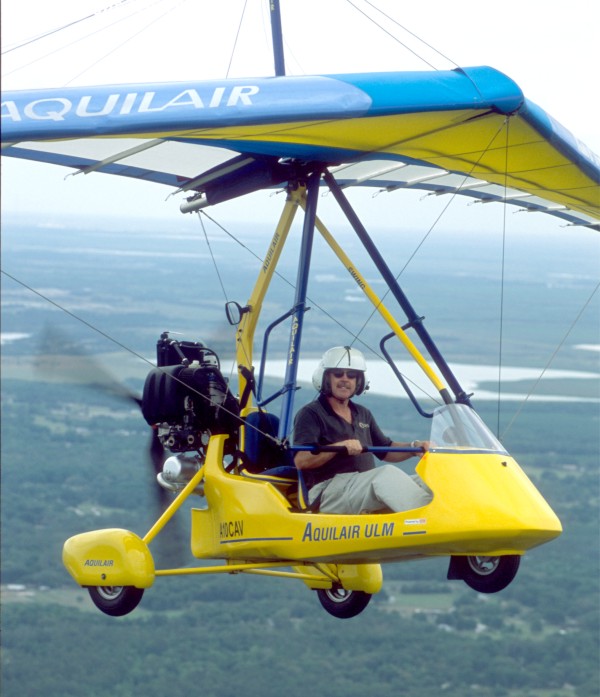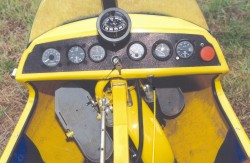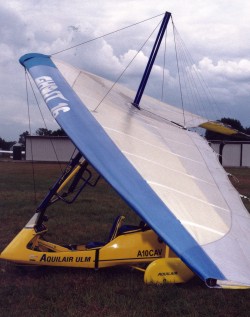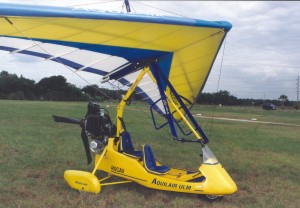
French manufacturer Aquilair wants you to get in the “swing” of triking with their 2-seat trike, the Swing. The trike’s sporty name identifies what the French company calls their “chariot” (chassis or carriage). The name may also derive from the company’s unique fold-down system. Most trikes pivot at the base of the mast (the component connecting occupants and engine to wing) or at a mid-mast point about engine height. Aquilair pivots the mast under the front seat – or the only seat in the case of their single-place model, the Kid. Placing the pivot point this far forward allows the company to offer easier lifting of the wing into position without using weighty and costly gas struts. The result is a simpler, lighter package that accomplishes the goal of letting one person erect the trike from its transport state. The feature is driven, I was told, by the 90-pound female owner of Aquilair.












